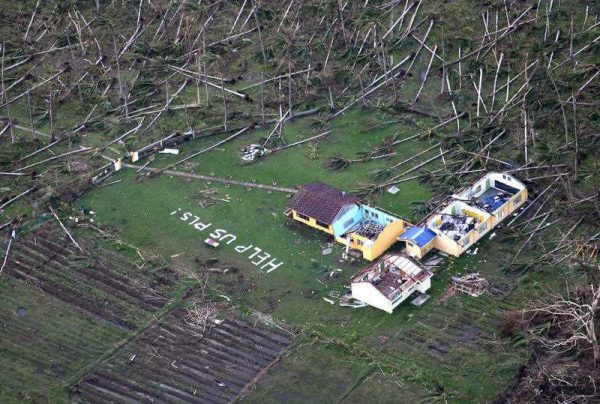This was seen during the 2004–2005 earthquake and tsunami in Aceh, Indonesia and the 2013 Typhoon Haiyan in the Philippines — both considered among the worst natural disasters of this century.
But while HADR may be a growing area of operations for the SDF, it is unlikely to be a springboard for a more active Japanese security policy overall. Structural barriers still exist, and Prime Minister Shinzo Abe does not appear to see HADR as a pathway toward a more active international role for the SDF.
For the Japanese government, HADR activities provide an opportunity to dispatch SDF personnel on overseas missions that do not spark controversy and that showcase tangible ‘boots-on-the-ground’ contributions to the global common good.
Unlike other SDF missions that touch on sensitive collective self-defence issues, such as peacekeeping operations and anti-terror missions, HADR deployments do not require legislative approval from the Diet (Japan’s parliament). That means the SDF can respond swiftly to regional disasters without being bogged down in the usual parliamentary debate over precise rules of engagement and other legislative minutiae — an important factor when time is of the essence.
Another useful application for HADR activities is to enhance joint defence cooperation with the US military and other like-minded nations. In the aftermath of the Aceh disaster, for instance, SDF units joined a core group of disaster response teams from the United States, Australia and India in what proved to be a catalytic event for deepening strategic ties among all four nations.
Perhaps most importantly, HADR operations build goodwill and reinforce Japan’s image as a responsible player in the international community, thus having a multiplier effect on Japan’s soft power assets in the region. As one of Asia’s most advanced nations with a professional, civilian-controlled defence force, Japan has a unique combination of technological, financial and human resources — not to mention a moral obligation — to come to the aid of less developed nations in times of need.
All of these factors could be the cornerstone of a revamped SDF mandate, with HADR as a main pillar of a new set of roles and missions. In turn, a real HADR strategy could add more substance to Prime Minister Abe’s somewhat ambiguous ‘proactive contributions to peace’ initiative. The SDF, for instance, could comprise the core unit of a standing first response team for natural disasters in the region.
But that does not appear to be how Abe envisions HADR — a fact that may have less to do with a lack of policy vision than with inherent structural constraints on SDF activities.
Among the most serious constraints are the limited resources the SDF can devote to international disaster relief operations. While Japan is a relatively wealthy country, it also carries the burden of a struggling economy and a defence budget customarily capped at one per cent of GDP. So, the sky is not the limit for Japanese largesse overseas.
At a time of mounting missile and nuclear threats from North Korea, as well as territorial challenges by China, the SDF is being stretched to respond to a broadening range of security concerns. Japan’s defence priorities lie in protecting its national interests, not necessarily providing for the common good, as important as that may be.
Perhaps this is one reason why the Abe administration has not emphasised HADR as a cornerstone of a more ‘proactive’ international role for the SDF. HADR is not a central feature of the administration’s recent National Security Strategy, nor is there a dedicated line item for international disaster relief in the Ministry of Defence’s operating budget.
Finally, although public support for SDF disaster relief activities has grown in the wake of Japan’s devastating Tohoku earthquake and tsunami on 11 March 2011, it is still not clear whether the public supports these activities beyond the domestic context.
So, while a recent poll conducted by Japan’s Cabinet Office shows 98 per cent support for SDF disaster relief activities, some 65 per cent of the public believe that current levels of engagement in international peace activities are adequate for the SDF. This suggests that there is limited public support for expanding overseas HADR responsibilities as a cornerstone of Abe’s ‘proactive contributions to peace’.
Considering all of these factors, it is unlikely that Japan’s growing HADR capacity will translate into a more active international role for the SDF. Instead, Japan will continue to respond on an ad hoc basis to natural disasters in the region in ways that represent more of an evolution than a revolution in its security affairs.
Weston S. Konishi is the William Reinsch Visiting Lecturer in East Asian Studies at Johns Hopkins University.


It is interesting, and unfortunate in my opinion, that PM Abe is willing to invest energy on ‘educating’ the public about issues like revising Amendment 9 of the Constitution or moving the base on Okinawa but not on an issue like increasing HADR activities by the SDF. As is noted by the author, these situations afford Japan the opportunity to earn much needed respect and even appreciation from its neighbors. Admittedly it would be a small, step by step process but if the SDF were to boost its engagement in these relief related activities it could help Japan overcome its neighbors’ longstanding resentment and mistrust in the context of its WW II history. It might also make it easier for the SDF to recruit more young people into its ranks when underemployment is still an important obstacle. This would be a more constructive ‘beautiful Japan’ than the one that Abe and his nationalist supporters envision.